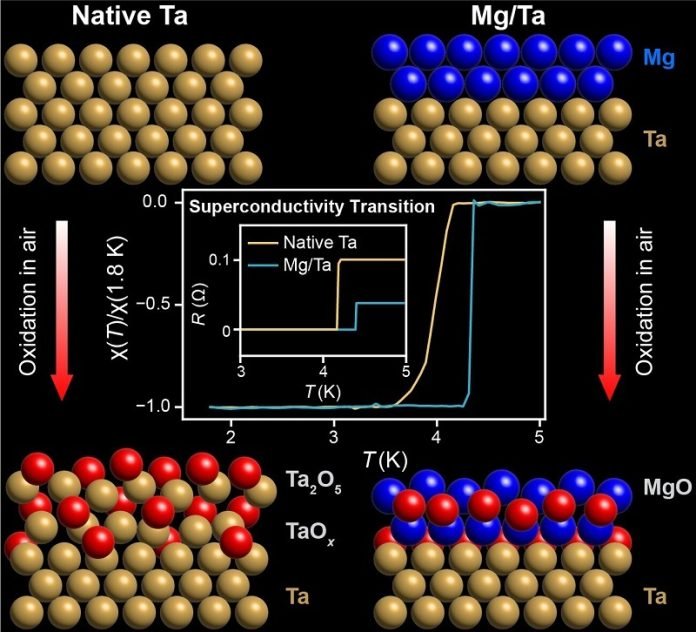
In the quest to build powerful quantum computers, scientists at the U.S. Department of Energy’s Brookhaven National Laboratory have made a groundbreaking discovery.
They’ve found a way to enhance tantalum, a superconducting material that could be key to creating qubits, the building blocks of quantum computers.
By adding a thin layer of magnesium, the team has improved tantalum’s ability to resist oxidation, increased its purity, and even raised its operating temperature.
This trio of benefits could significantly boost tantalum’s effectiveness in holding quantum information.
Quantum computers are the next frontier in computing technology, promising to solve complex problems that are beyond the reach of today’s most powerful machines.
Qubits, unlike the bits in traditional computers, can hold and process a massive amount of information at once, thanks to the principles of quantum mechanics.
The challenge, however, has been in finding materials that can support qubits by maintaining quantum coherence, or the ability to retain quantum information over time.
Tantalum, known for its superconducting properties, emerged as a promising candidate. But it had a major drawback: it easily oxidizes, losing energy and disrupting quantum coherence.
To tackle this problem, the Brookhaven team, along with collaborators from Princeton University and the DOE’s Pacific Northwest National Laboratory (PNNL), embarked on a mission.
They wanted to understand why tantalum oxidizes and how to prevent it. Their research revealed that when tantalum interacts with oxygen, it forms an insulating layer that drains energy, posing a significant hurdle for its use in quantum computing.
Enter magnesium. The team discovered that coating tantalum with a thin layer of magnesium could protect it from the air, preventing oxidation. This innovative approach not only kept tantalum’s superconducting properties intact but also made it a more viable candidate for quantum computing.
The study, published in the journal Advanced Materials, used advanced techniques to show how magnesium forms a protective barrier over tantalum.
This barrier is so effective that it nearly eliminates the formation of disruptive tantalum oxide. What’s more, magnesium draws out impurities from tantalum, further enhancing its superconducting capabilities.
This discovery is significant for several reasons. First, it prolongs the quantum coherence time of tantalum, making it a better material for qubits.
Second, by raising the superconducting transition temperature, it reduces the extreme cooling requirements typically needed for superconductors to function. This could simplify the design and operation of quantum computers, making them more practical and accessible.
The implications of this research extend beyond tantalum and magnesium. It opens up new avenues for improving other materials and designing more efficient qubits.
As quantum computing moves from theory to reality, discoveries like this are crucial steps forward.
While there’s more work to be done to see how this material performs in actual quantum computers, the Brookhaven team’s work offers new insights into the design of superconducting materials.
It’s a promising development in the journey toward building large-scale, high-performance quantum computing systems, bringing us closer to unlocking the vast potential of quantum technology.



